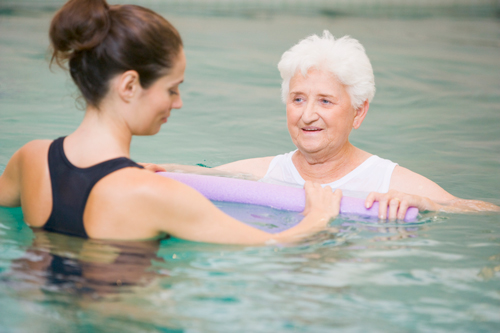
So you are facing hip replacement surgery, and your physician has recommended water therapy as a form of rehabilitation. You are hesitant, but the facts are that water therapy uses the physical properties of water to assist in patient healing and exercise performance. It can be a very safe, effective method of rehabilitation after hip replacement. Water therapy is bene cial because it provides resistance without the usual wear and tear on joints. While free weights and circuit training offer resistance, the joints must endure a fair amount of “jarring” with these methods. In contrast, exercises in water offer a natural form of resistance with decreased stress on the joints, making for an environment more conducive to safe, effective exercise and physical therapy. Benefits include decreased swelling and improved joint position due to hydrostatic pressure during water therapy. The warmth of the water also relaxes the muscles and opens up (dilates) blood vessels, thus increasing blood flow to injured areas of the body. Water therapy is also very effective for those who lack strength in their core muscles and have diffculty standing or walking.
As with any exercise or physical therapy program, there are methods that enhance the safety and effectiveness of the therapy routine. During the first week, the emphasis should be on restoring range of motion. You will be gently encouraged to perform toe lifts and gentle hip cycles. In the second and third weeks, the pace and duration of workouts will usually increase as new exercises are introduced, including calf and hamstring stretches. The intensity of exercise will rise significantly during weeks four through six to continue improvement. One note of caution: If you suffer from cardiac disease or hypertension, you may need to refrain from aquatic exercise because the increased blood flow may place added stress on the heart. If you are incontinent, you may have to avoid aquatic exercises altogether. Water therapy is just one technique in the physical therapy arsenal to help you heal and return to your normal activities after surgery. We will gladly work with your surgeon to design a program that meets your fitness requirements under the safest conditions.


















